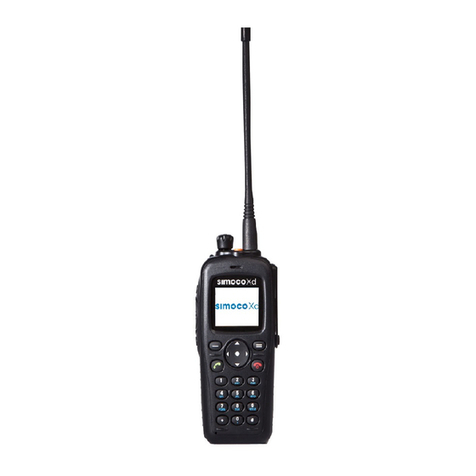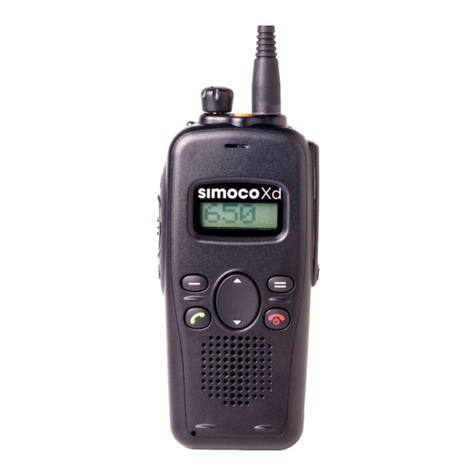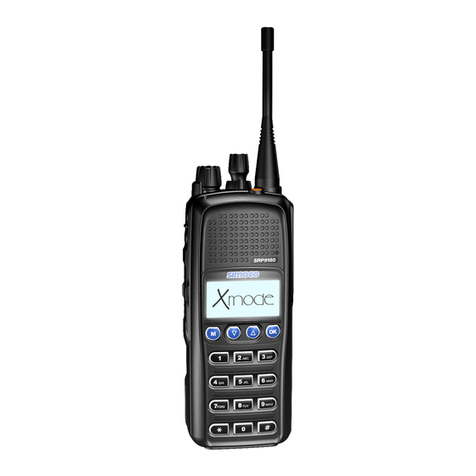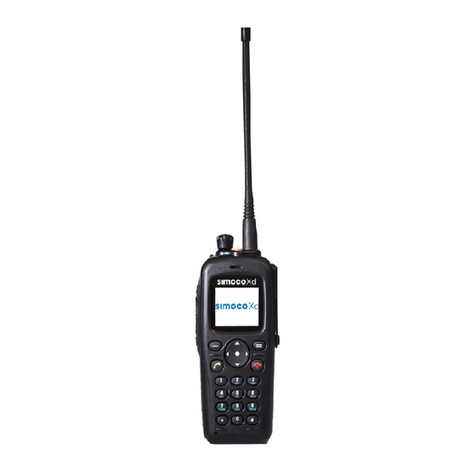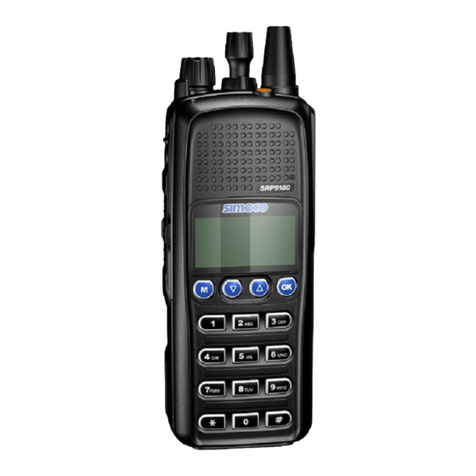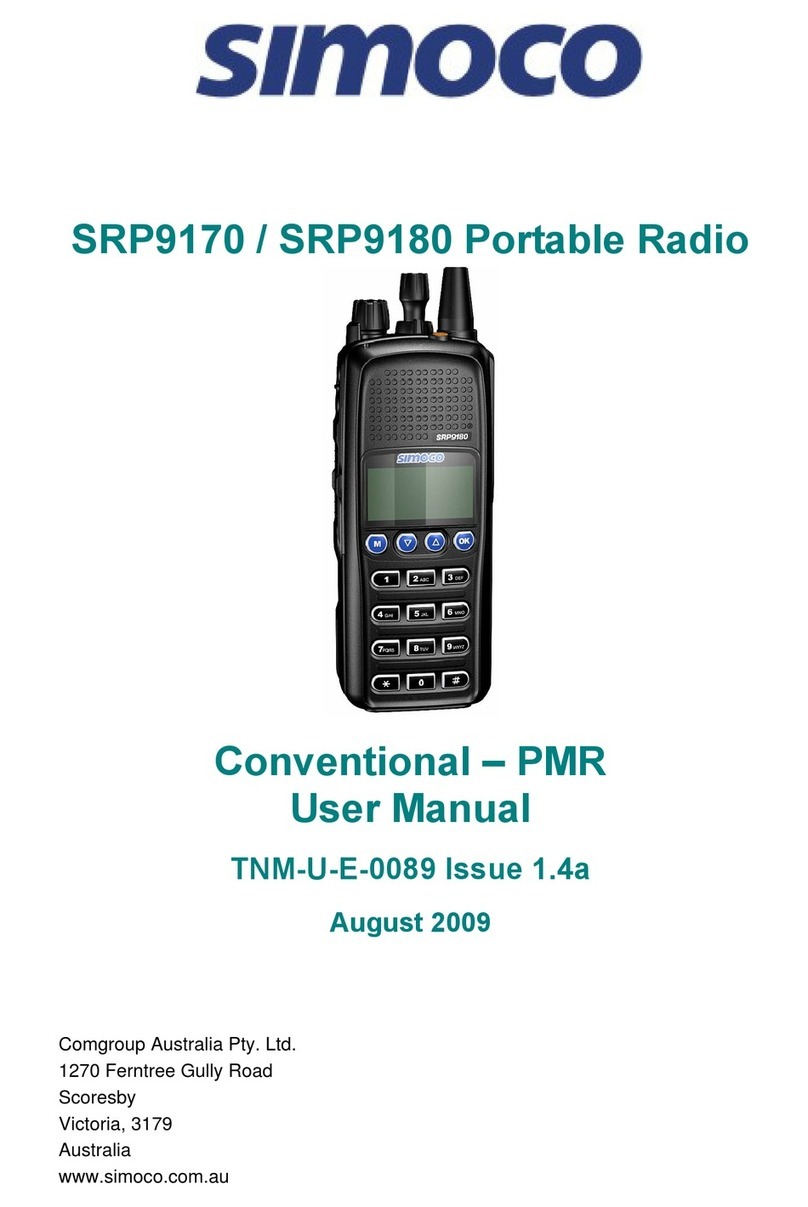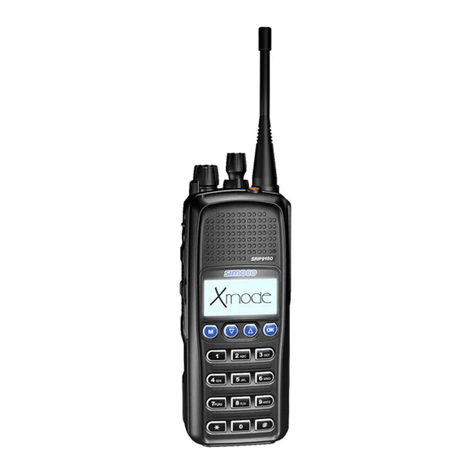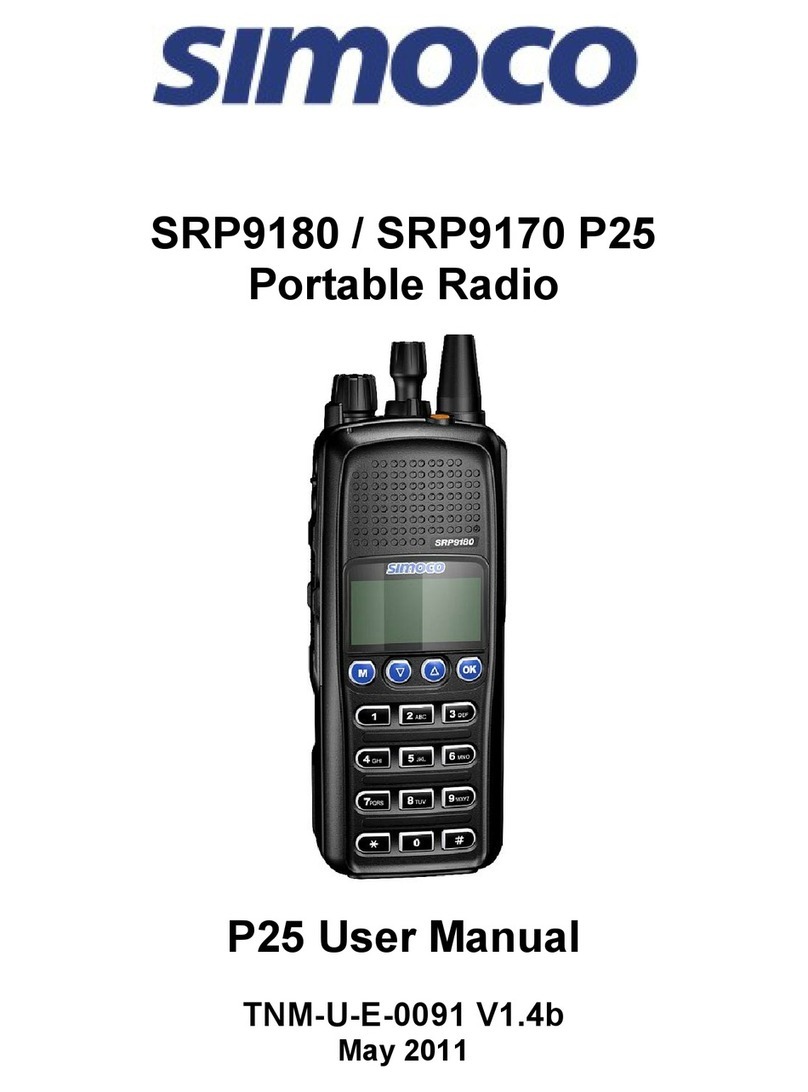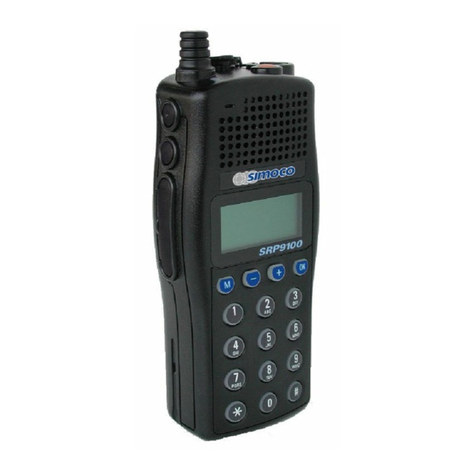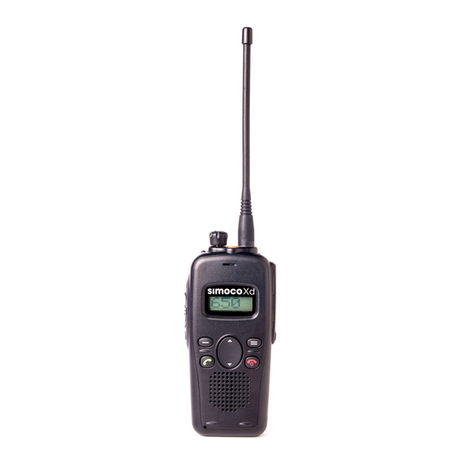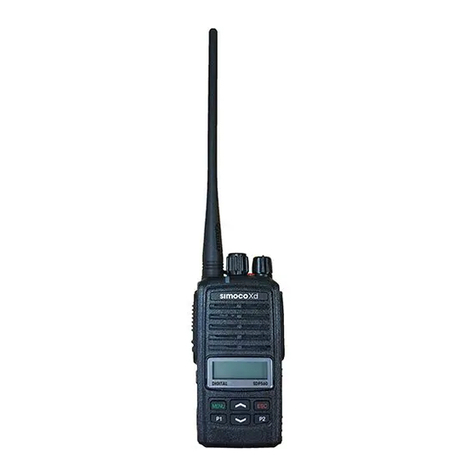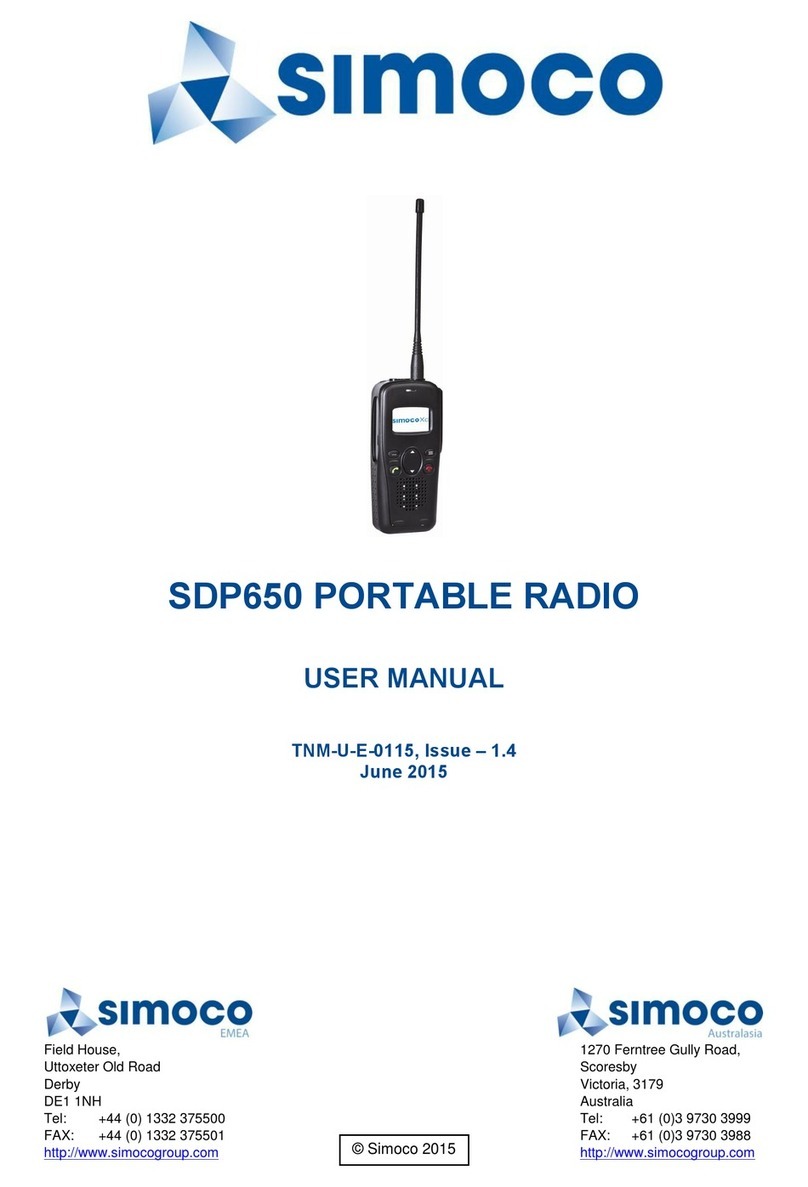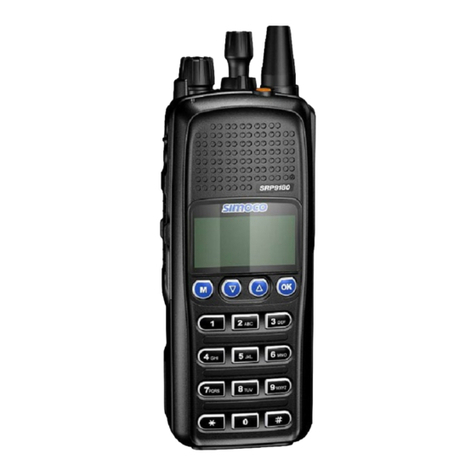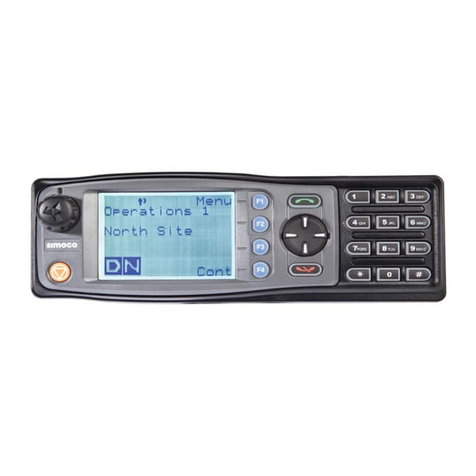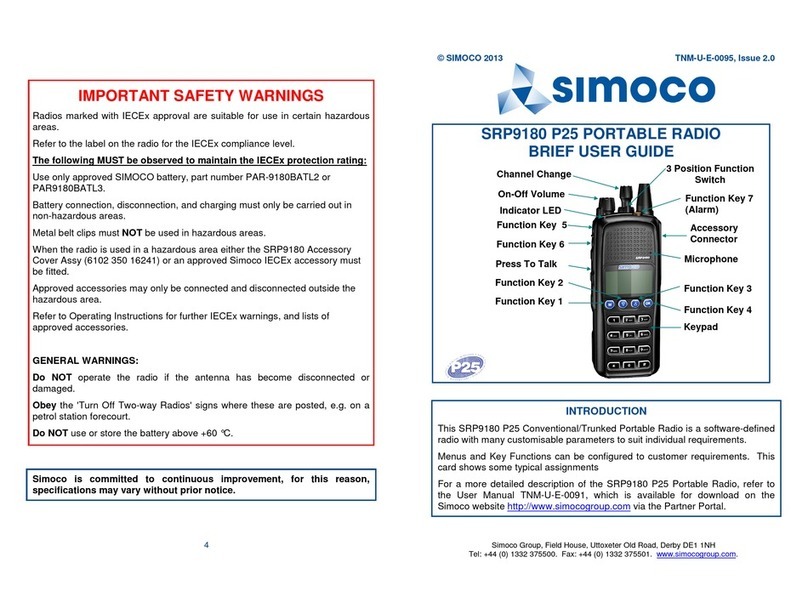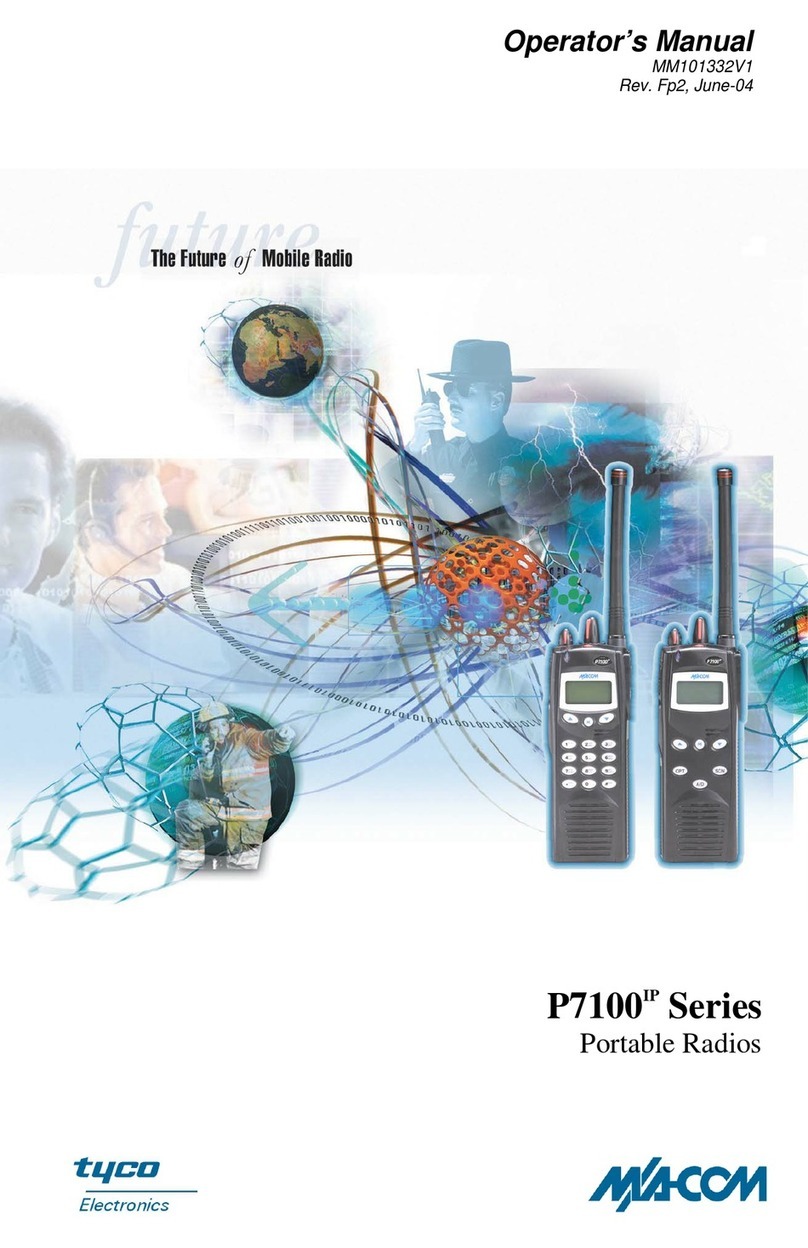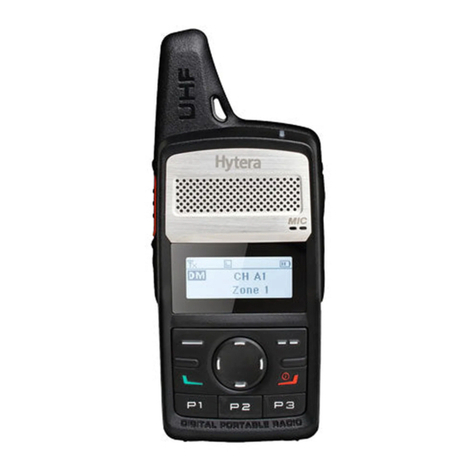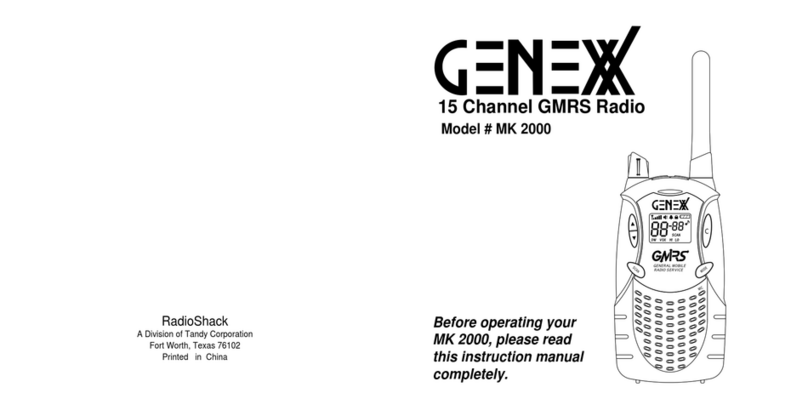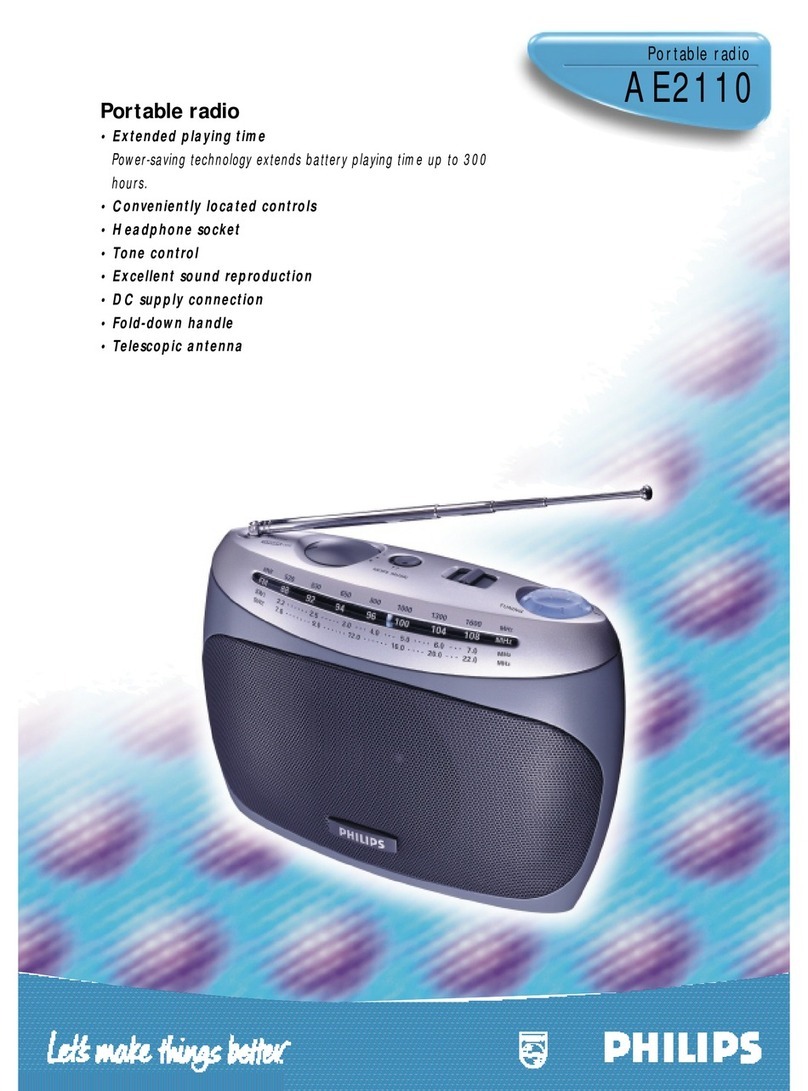
General Information
This section covers the following information:
nDeclaration
nCopyright
nComputer and Software Copyrights
nDisclaimer
nEquipment and Manual
Declaration
This Service Manual covers the SDP700 Series Frequency Modulation (FM), Very High
Frequency (VHF)/Ultra High Frequency (UHF) Portable Radio Transceiver.
Any performance figures quoted are subject to normal manufacturing and service
tolerances. The right is reserved to alter the equipment described in this manual in the
light of future technical development.
Changes or modifications not expressly approved by the party responsible for
compliance could void the user’s authority to operate the equipment.
Note: The manufacturer is not responsible for any radio or television interference
caused by unauthorized modifications to this equipment. Such modifications could
void the user’s authority to operate the equipment.
Copyright
All information contained in this document is the property of Simoco. All rights are
reserved. This document may not, in whole or in part, be copied, photocopied,
reproduced, translated, stored, or reduced to any electronic medium or machine-
readable form, without prior written permission from Simoco.
Computer Software Copyrights
The AMBE+2® voice coding technology embodied in this product is protected by
intellectual property rights including patent rights, copyrights and trade secrets of
Digital Voice Systems, Inc. This voice coding Technology is licensed solely for use
within this Communications Equipment. The user of this Technology is explicitly
prohibited from attempting to extract, remove, decompile, reverse engineer, or
disassemble the Object Code, or in any other way convert the Object Code into a
human-readable form. U.S. Patent Nos. #6,912,495 B2, #6,199,037 B1, #5,870,405,
#5,826,222, #5,754,974, #5,701,390, #5,715,365, #5,649,050, #5,630,011,
#5,581,656, #5,517,511, #5,491,772, #5,247,579, #5,226,084 and #5,195,166.
Doc Number: TNM-U-E-0156 Issue: 2.3 Page ix


